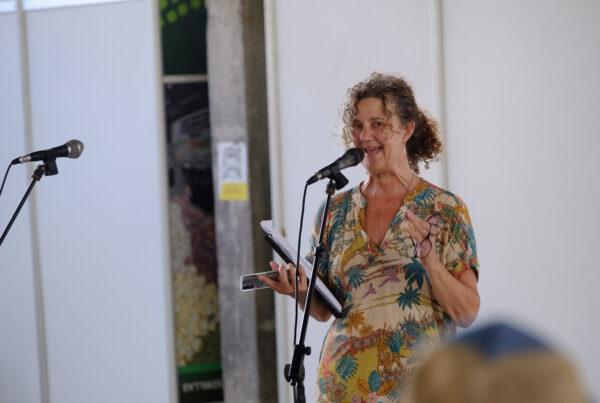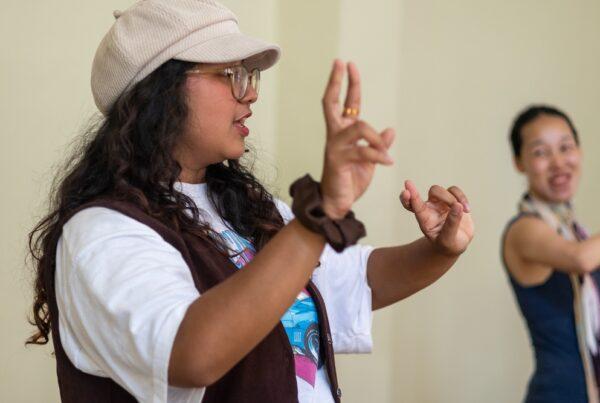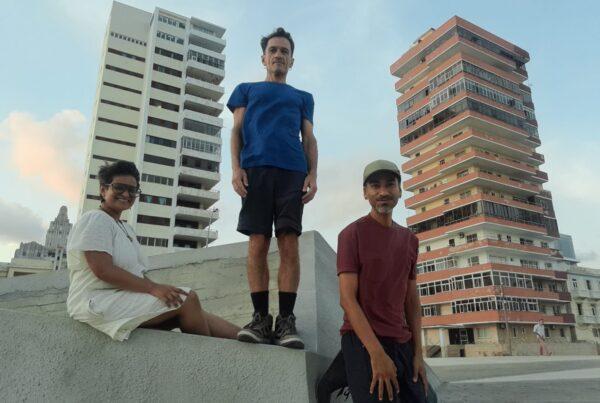A Word From The National Performance Selectors
 It is a special challenge to select a program from an art space to which one does not belong and which one is not familiar with sufficiently. Although it was not completely unknown to us, our knowledge of the recent TYA production in Serbia has so far been selective and “refined” through theatre festivals, revues and special occasions. But it was only when we watched the 17 plays registered for the national program of the FAS – ASSITEJ Artistic Gathering 2023 (Serbia) that we got a more thorough insight into the current state of TYA in Serbia. Based on what we saw, we can conclude that, on the one hand, the theatres cherish the traditional expression with the story in the foreground, while on the other hand, they bravely and daringly explore the thematic, but also the performance field, which to us seems to be particularly important. That is to say, the performance layer in plays for young audiences often falls into the background, far behind the content, which, if we add to it the almost ever-present didactic weight, hinders the development of TYA. There are no weights in the selected plays, which enables them a flight into spaces of freedom, creativity and unburdened search for the new.
It is a special challenge to select a program from an art space to which one does not belong and which one is not familiar with sufficiently. Although it was not completely unknown to us, our knowledge of the recent TYA production in Serbia has so far been selective and “refined” through theatre festivals, revues and special occasions. But it was only when we watched the 17 plays registered for the national program of the FAS – ASSITEJ Artistic Gathering 2023 (Serbia) that we got a more thorough insight into the current state of TYA in Serbia. Based on what we saw, we can conclude that, on the one hand, the theatres cherish the traditional expression with the story in the foreground, while on the other hand, they bravely and daringly explore the thematic, but also the performance field, which to us seems to be particularly important. That is to say, the performance layer in plays for young audiences often falls into the background, far behind the content, which, if we add to it the almost ever-present didactic weight, hinders the development of TYA. There are no weights in the selected plays, which enables them a flight into spaces of freedom, creativity and unburdened search for the new.
For this year’s FAS, we have chosen nine plays, strengthening the selection with slightly older, though still current plays, Silent Boy by the Theatre for Children and Youth Kragujevac and I Am Akiko by the Festival of Ecological Theatre for Children and Youth Bačka Palanka which, we believe, well represent the aspirations and ideas of TYA in Serbia.
Most of the selected plays start from the verbal layer, most often shaped as a narrative. But that narration does not take the position of a ruler that suffocates and destroys other elements of the play, but rather opens up spaces for visual and sound performance and (or) creates a dialogue with them. In the dialogue, the interlacing, and sometimes the humorous conflict, the plays grow, and in them the fun, cheerful and comical or tender, emotional and warm layers of the performance finely wrap around the idea itself, not underlining or imposing it, but playing with it and discreetly offering it to the small viewers.
The narrative layer opens the play Kurt Quo Vadis by the ‘Boško Buha’ Theatre, elegantly flowing into dialogue and stage play, wittily writing up characteristics and characters into the props, and unobtrusively returning to the narrative frame. The narrative is intertwined with very subtle staging in Bambi by the Little Theater ‘Duško Radović’, while in the Stolen Prince and the Lost Princess of the same theatre, the fun play between the verbal and visual layers becomes the carrier of the whole. The story based on a short novel by Igor Kolarov in the play Agi and Ema by the Municipality Theatre Bečej opens wide the door to a witty and warm stage play full of excellent puppetry staging and constant changes that firmly bind the attention of small viewers from beginning to end.
Three performances in the selection are aimed at teenagers, which creates a fine age balance. In Do Birds Have the Capacity for Fun? by Bitef Theatre, the narration opens up space, intertwines and dialogues with an extremely interesting stage play which penetrates the world of robotics, rarely seen on the regional stage (except in Slovenia). Together they create (from the human point of view) an apocalyptic world of post-humanism that offers some new images of the past, written from the perspective of survivors. On the other hand, Ovid’s story is only the initiator of the whole and the episodes in Metamorphoses of the Novi Sad Youth Theatre, in which the director and performers poetically and effectively get into the essence of the material (primarily rope), animating it in a creative way, while making extremely successful visual images. Puls Theatre Lazarevac went a step further from the basic story with its post-punk teenage Alice, whom they took off of the stage and into corridors, rooms and toilets, erasing all walls, calculations and fences between itself and the audience and creating several very memorable scenes.
Towards the end of the review, we return to plays for children and take an additional step away from storytelling. In the play Under the Droplet by Stanica/Station-service for contemporary dance, the narrative layer is hidden in the background. At the very beginning of the play, they open a space for children’s creativity, and then leave the focus entirely on the visual. In this aspect, dance solos and group dances alternate in a well-hit rhythm, a play with lights and bodies, which without imposing, subtly and delicately draw the little spectators in. Finally, in the play The Wind by the Theatre for Children and Youth Kragujevac, the narrative layer completely displaces the power of the wind that builds episodes in its predictability and unpredictability, moving objects and things and thereby building relationships within individual entities, but also between them.
Such a complex national program represents a combination of a well-formed story and a stage play in which the narration is only the driving force, that is, the best of the current TYA in Serbia, with a very interesting view towards tomorrow.
SELECTORS:
Petar Pejaković, Director, Professor at the Faculty of Dramatic Arts in Cetinje, General Manager of the Kotor Children’s Theatre Festival
Igor Tretinjak, Theatre Expert and Critic, Lecturer at the Academy of Art and Culture in Osijek at the puppetry program of the Department of Theater Arts, Coordinator of the critics’ team and Editor in the regional platform ‘From the first step’





